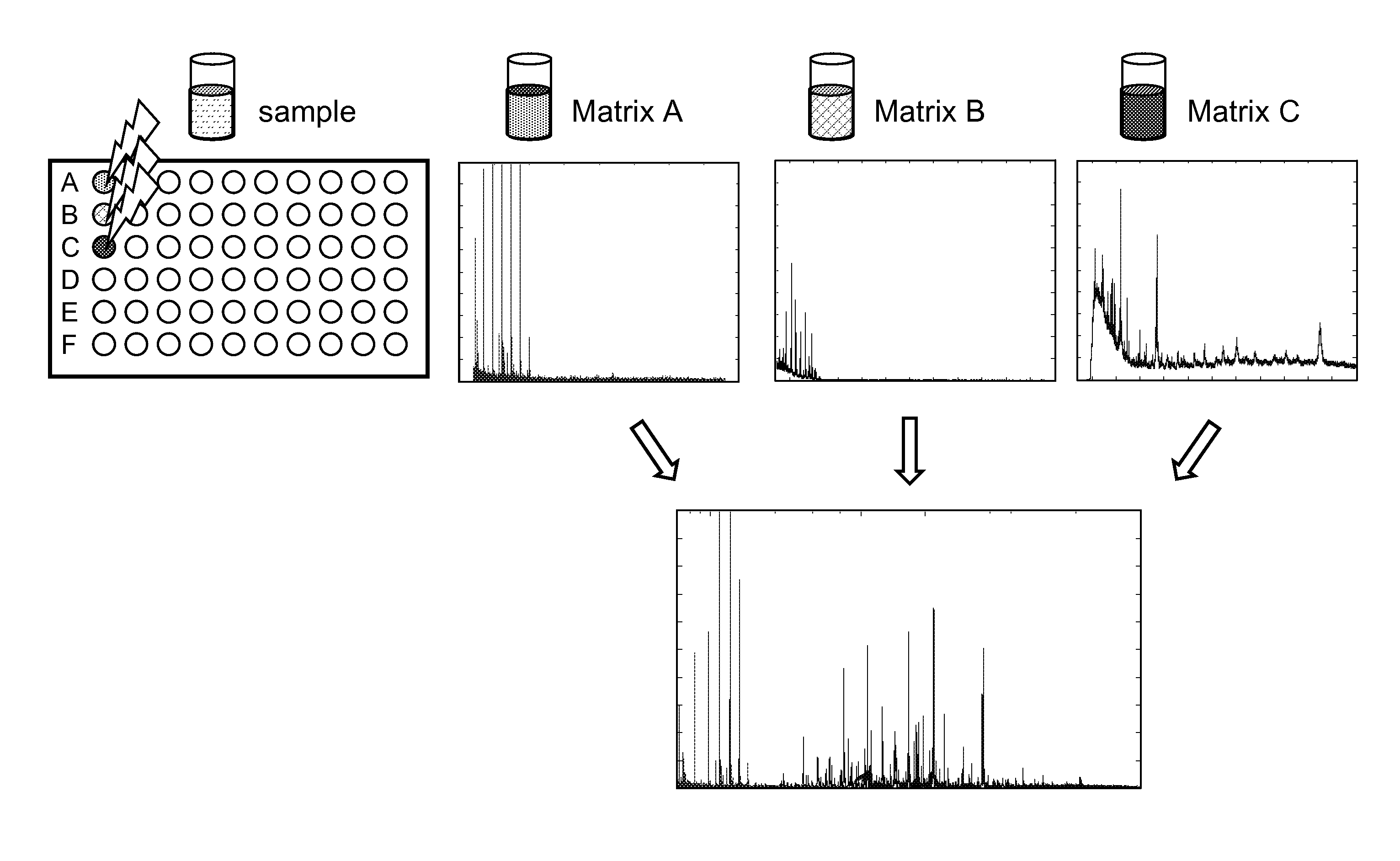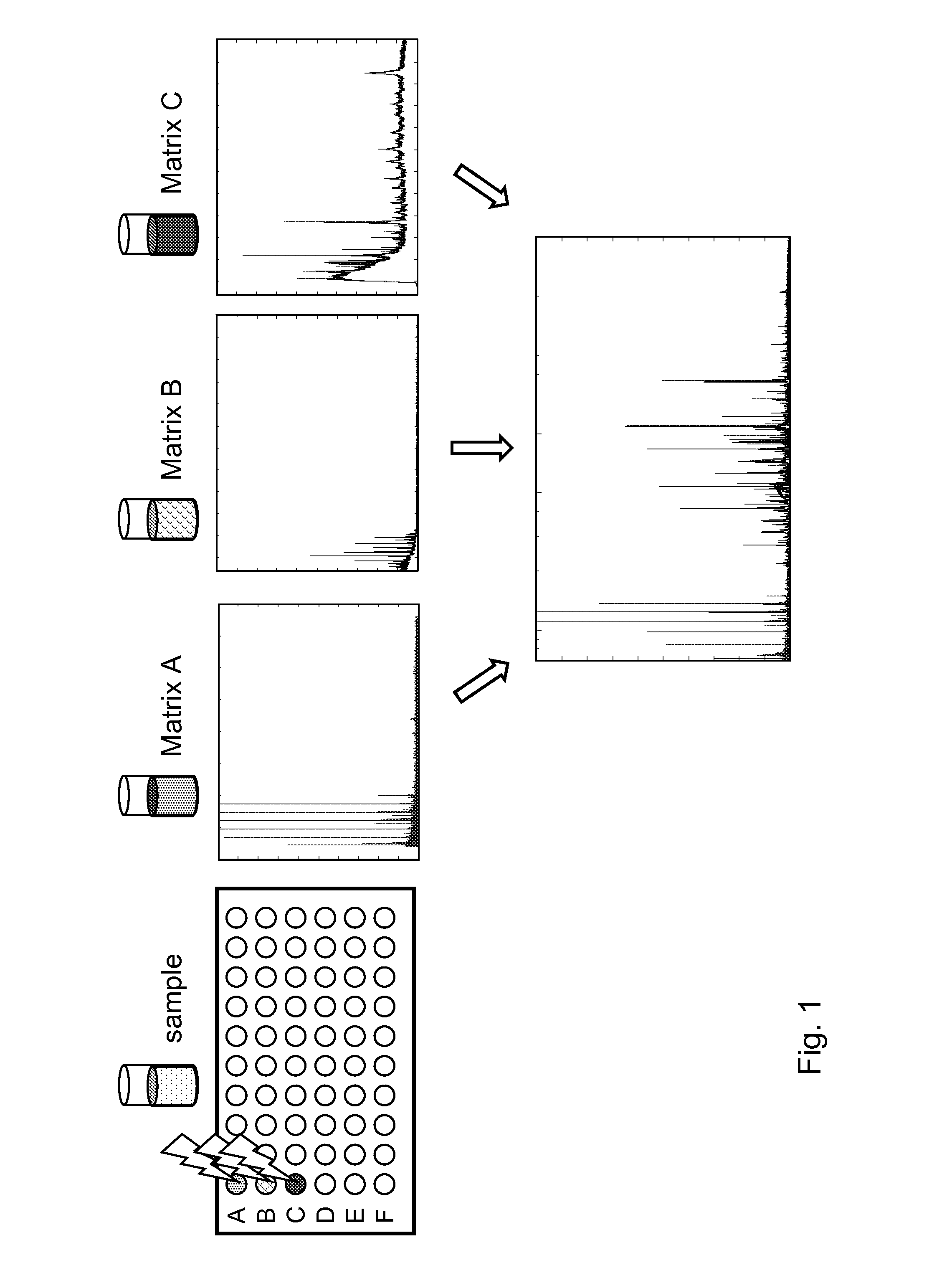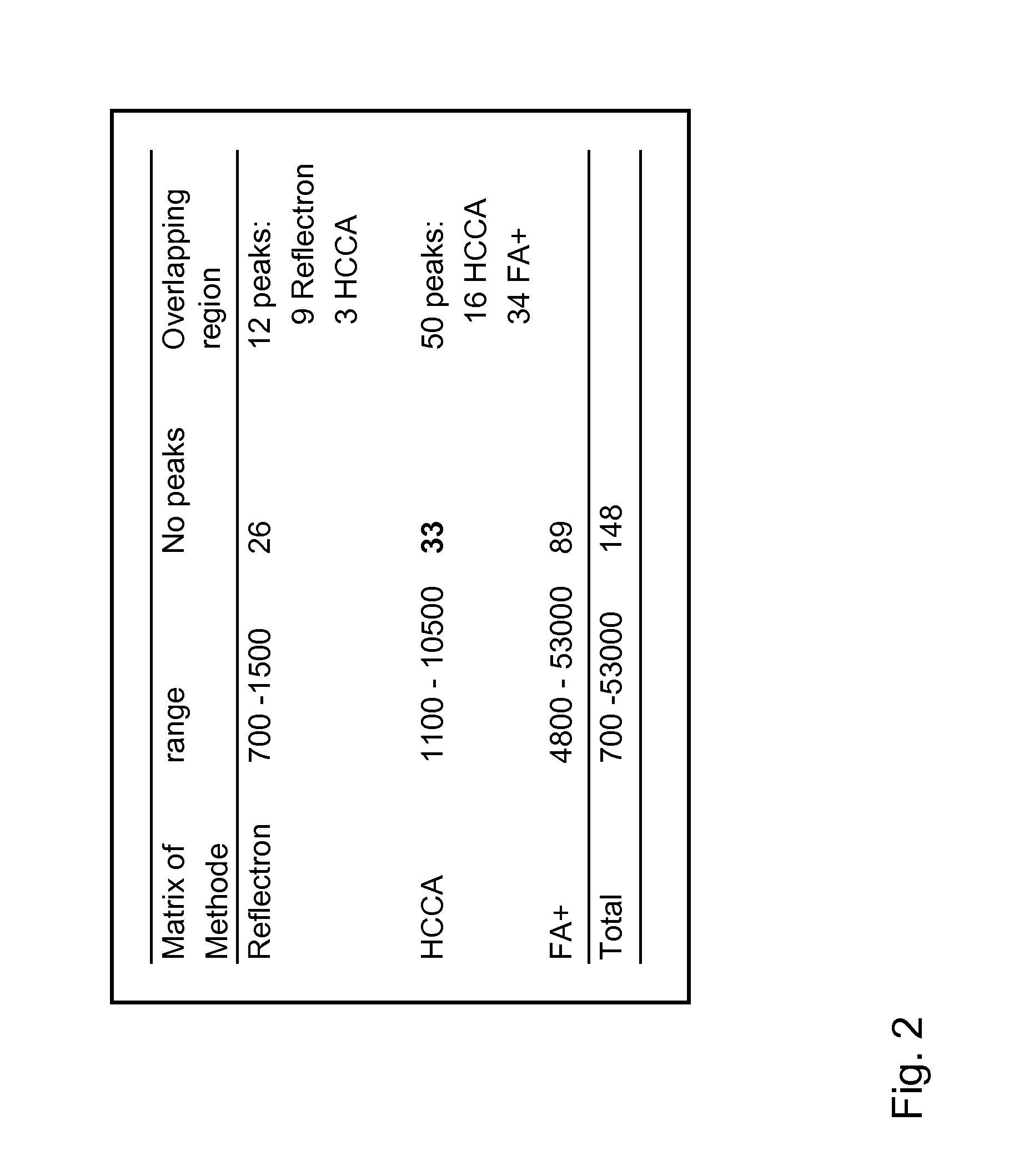Classification method for spectral data
- Summary
- Abstract
- Description
- Claims
- Application Information
AI Technical Summary
Benefits of technology
Problems solved by technology
Method used
Image
Examples
example 1
[0072]The experiment exists of 1) sample preparation, 2) spotting sample and matrices, 3) measuring, and 4) data analysis
[0073]1) Sample Preparation
[0074]Harvest cells cultured on a blood agar plate (overnight at 35° C.) by transferring a small amount of bacteria into a tube containing 300 μl sterile water and mix carefully.
[0075]Add 900 μl ethanol (absolute) and mix carefully.
[0076]After 10-30 minutes incubation at room temperature, mix thoroughly and centrifuge for 5 minutes at 10 000 g and remove the supernatant with pipette.
[0077]Centrifuge 2 min. 10.000 g to remove all ethanol (one additional centrifugation step is necessary to completely remove the ethanol)
[0078]Add 50 μl 70% formic acid to the pellet and mix very well by pipetting and / or by mixing on a vortex. The pellet should be resolved as well as possible.
[0079]Add 50 μl pure acetonitrile and mix carefully.
[0080]Centrifuge for 2 minutes at 10 000 g speed
[0081]2) Spotting Sample and Matrices
[0082]Pipette 0.5 μl of supernat...
PUM
 Login to View More
Login to View More Abstract
Description
Claims
Application Information
 Login to View More
Login to View More - R&D
- Intellectual Property
- Life Sciences
- Materials
- Tech Scout
- Unparalleled Data Quality
- Higher Quality Content
- 60% Fewer Hallucinations
Browse by: Latest US Patents, China's latest patents, Technical Efficacy Thesaurus, Application Domain, Technology Topic, Popular Technical Reports.
© 2025 PatSnap. All rights reserved.Legal|Privacy policy|Modern Slavery Act Transparency Statement|Sitemap|About US| Contact US: help@patsnap.com



